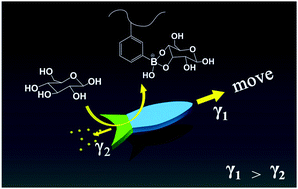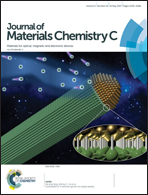Motion-based glucose sensing based on a fish-like enzymeless motor†
Abstract
In this paper, we report a fish-like enzymeless motor, which consists of a phenylboronic acid modified poly(N-isopropylacrylamide) hydrogel and a surfactant, i.e. sodium dodecyl sulfate. The motor is capable of moving autonomously upon exposure to the glucose molecule. This phenomenon originates from the complexation between glucose and phenylboronic acid, which leads to the swelling of the hydrogel and the release of the surfactant, thus propelling the whole structure based on the Marangoni effect. Interestingly, the motor's moving velocity is directly proportional to the glucose concentration. Through the introduction of a magnetically responsive material, the motion direction of the motor can be manipulated. More interestingly, the combination of the glucose-dependent motion and magnetically steerable motion allows us to directly visualize the glucose concentration in human serum or urine. We thus believe that the motor reported in the current study may have potential for application in the field of glucose sensing for the detection and monitoring of diabetes.



 Please wait while we load your content...
Please wait while we load your content...